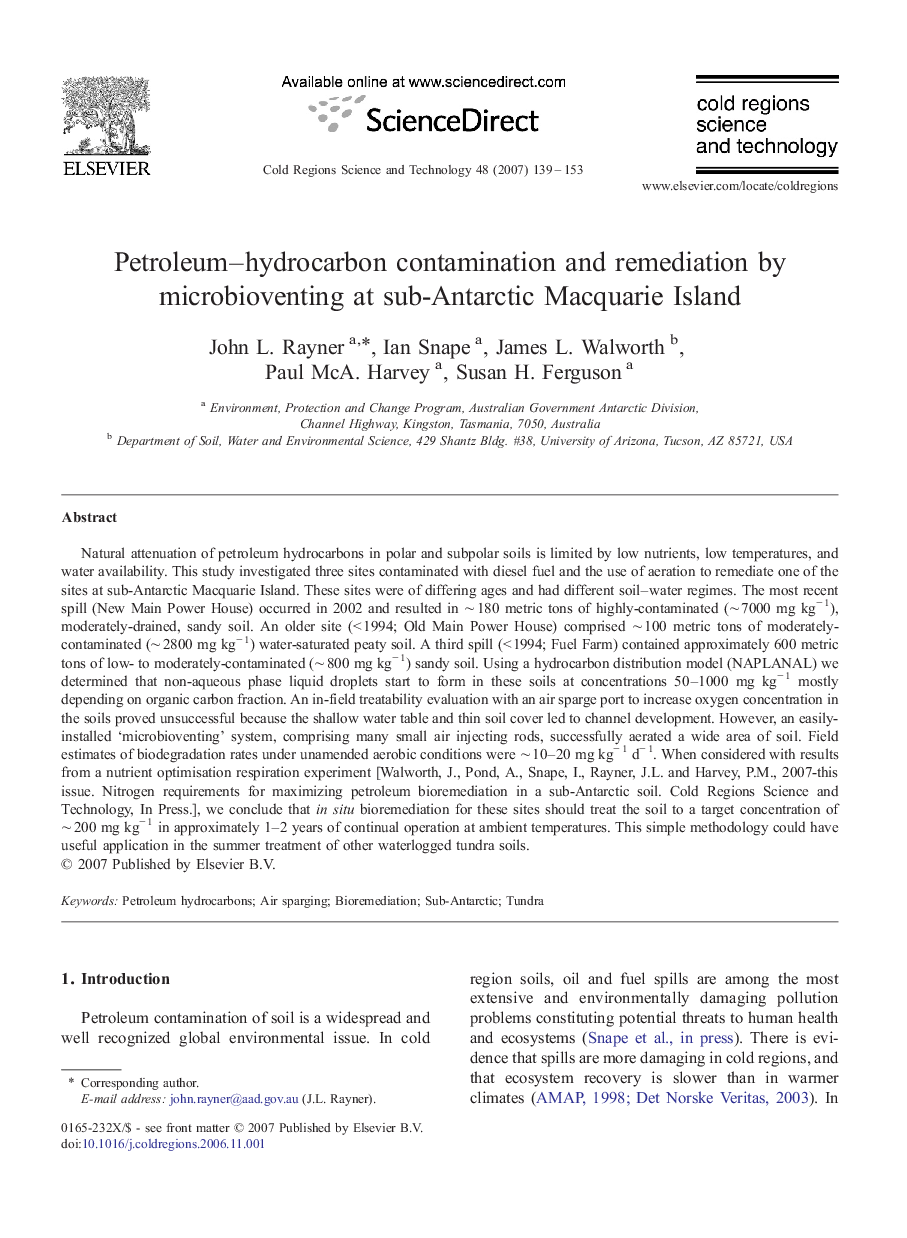| Article ID | Journal | Published Year | Pages | File Type |
|---|---|---|---|---|
| 4676871 | Cold Regions Science and Technology | 2007 | 15 Pages |
Natural attenuation of petroleum hydrocarbons in polar and subpolar soils is limited by low nutrients, low temperatures, and water availability. This study investigated three sites contaminated with diesel fuel and the use of aeration to remediate one of the sites at sub-Antarctic Macquarie Island. These sites were of differing ages and had different soil–water regimes. The most recent spill (New Main Power House) occurred in 2002 and resulted in ∼ 180 metric tons of highly-contaminated (∼ 7000 mg kg− 1), moderately-drained, sandy soil. An older site (< 1994; Old Main Power House) comprised ∼ 100 metric tons of moderately-contaminated (∼ 2800 mg kg− 1) water-saturated peaty soil. A third spill (< 1994; Fuel Farm) contained approximately 600 metric tons of low- to moderately-contaminated (∼ 800 mg kg− 1) sandy soil. Using a hydrocarbon distribution model (NAPLANAL) we determined that non-aqueous phase liquid droplets start to form in these soils at concentrations 50–1000 mg kg− 1 mostly depending on organic carbon fraction. An in-field treatability evaluation with an air sparge port to increase oxygen concentration in the soils proved unsuccessful because the shallow water table and thin soil cover led to channel development. However, an easily-installed ‘microbioventing’ system, comprising many small air injecting rods, successfully aerated a wide area of soil. Field estimates of biodegradation rates under unamended aerobic conditions were ∼ 10–20 mg kg− 1 d− 1. When considered with results from a nutrient optimisation respiration experiment [Walworth, J., Pond, A., Snape, I., Rayner, J.L. and Harvey, P.M., 2007-this issue. Nitrogen requirements for maximizing petroleum bioremediation in a sub-Antarctic soil. Cold Regions Science and Technology, In Press.], we conclude that in situ bioremediation for these sites should treat the soil to a target concentration of ∼ 200 mg kg− 1 in approximately 1–2 years of continual operation at ambient temperatures. This simple methodology could have useful application in the summer treatment of other waterlogged tundra soils.
